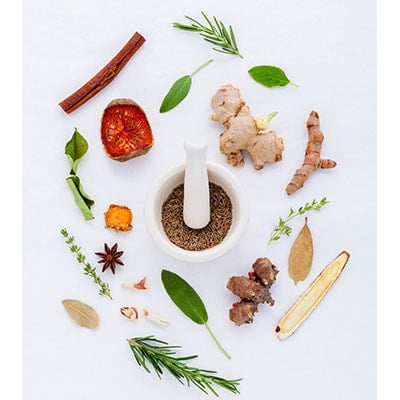
There is great satisfaction in re-growing veggies (also fruit!) from scraps. Following a few basic guidelines, you too can now watch as your foods regenerate themselves. Apart from the fact that you may save yourself (even small amounts of) money, it’s also fun to watch your effort turn into fine edibles for your table. Most of the following examples are not that hard to grow. So, look at our tips, roll up your sleeves and start farming your own produce, even from your kitchen! Remember to use fresh, not old scraps:
Garlic Sprouts
Wonderful when used fresh on baked/boiled potatoes, salads or stirred into scrambled eggs and pastas, garlic sprouts are grown from the garlic clove. All you need is a little water at the bottom of a cup; the windowsill is a perfect spot to leave it in. As easy as that! Place the clove (or whole bulb) in just enough water to touch the bottom of the cloves: soon enough the cloves will grow roots. Change the water every few days. Although the sprouts like soil, it is not essential. Water and enough light will suffice. When the shoots are about 3 inches tall, you can harvest by cutting the sprouts with your kitchen scissors or a sharp knife.
Spring Onion and Celery
Use about 1 inch of your spring onion bottoms (with roots) to regrow. Place them in some water on the windowsill, change the water every day and have brand-new spring onions within a week! And celery? As easy. Do the same, but re-plant your celery bottom in soil after 3 days. You should not have to wait too long for harvestable celery.
Lemongrass
Mainly used in dishes from the Far East, this perennial is easy to grow from its discarded roots. Put the bottoms of lemongrass in some water and notice roots after only 3 weeks! Now you transplant your new lemongrass roots in good soil in a sunny spot from where you will later harvest the grass.
Ginger
Very few of us don’t fancy gingerbread or ginger biscuits. Easy to grow, but be patient: it can take up to 12 months to harvest. Use plump, healthy roots, which you break into pieces with good buds on them. Soak them in water overnight. Then plant these in large containers full of good potting soil. Ginger likes sun and warmth and enough water (but do not drown).
Potatoes and Sweet Potatoes
When your potato starts showing those little dark spots known as ‘eyes’, it is time to re-grow. Cut them into small pieces, leaving at least one (preferably 2) eye per piece. Leave them outside for at least 2 days to dry and callous (becoming hardened/thickened) all over before you plant them in deep soil in your garden. Potatoes like sunshine and enough water.
Basil
Cut 4- to 5-inch stems with a sharp object just below that part on the stem where new leaves sprout. Remove leaves on the lower stem then place it in a glass of water in a light, bright spot. Change the water every few days. As soon as the roots are approx. 2 inches long, it is time to plant them in pots with good potting soil (or, of course, in the garden).
Romaine lettuce
All you need is the bottom of a lettuce head and no more than an inch of water in which to grow the stump. Easy, isn’t it?
Onions
Grow new onions from root ends. Dry onion bottoms (with roots intact) for a few days in a cool area to allow for callousing. Then you plant them in pots and cover them with approx. 2 inches of soil and water them. Once you notice new leaves, you can replant them in either bigger pots or your garden.
Blueberries
Lovely to look at, great on the tongue and full of goodness, the blueberry is easy to grow from softwood cuttings of 4 to 6 inches in length. Use big enough pots to take up to 4 cuttings, and ensure you use good soil, which you keep moist. A sunny windowsill works very well. Once you have at least 1 inch of new growth on the stem, you can transplant your cuttings to bigger pots. Later, after a few months of new growth, you plant your blueberries in the garden.
